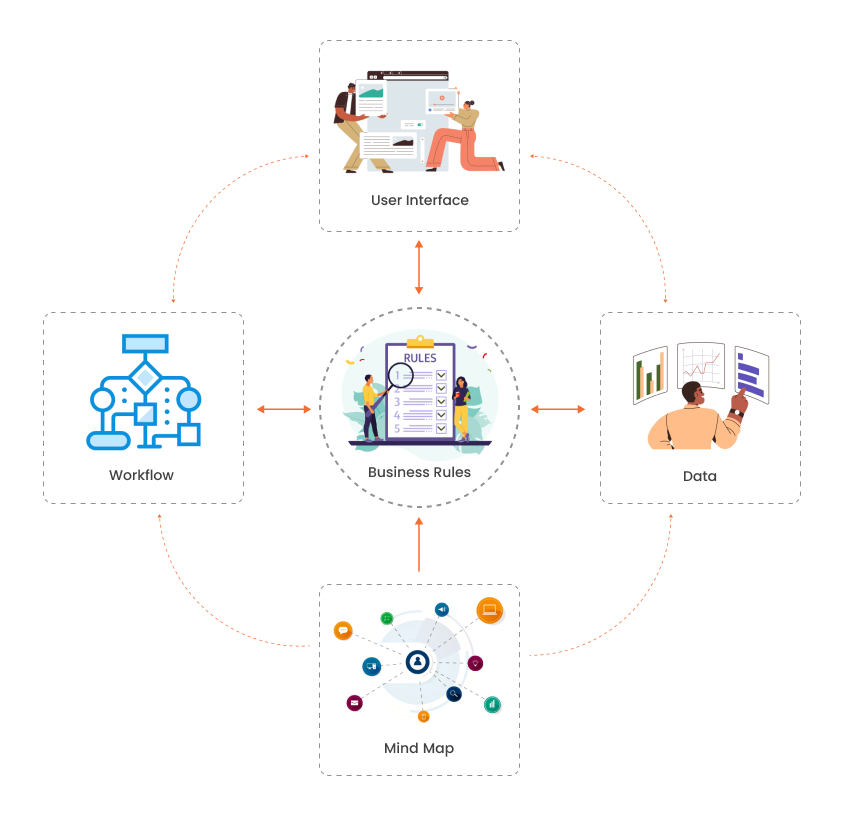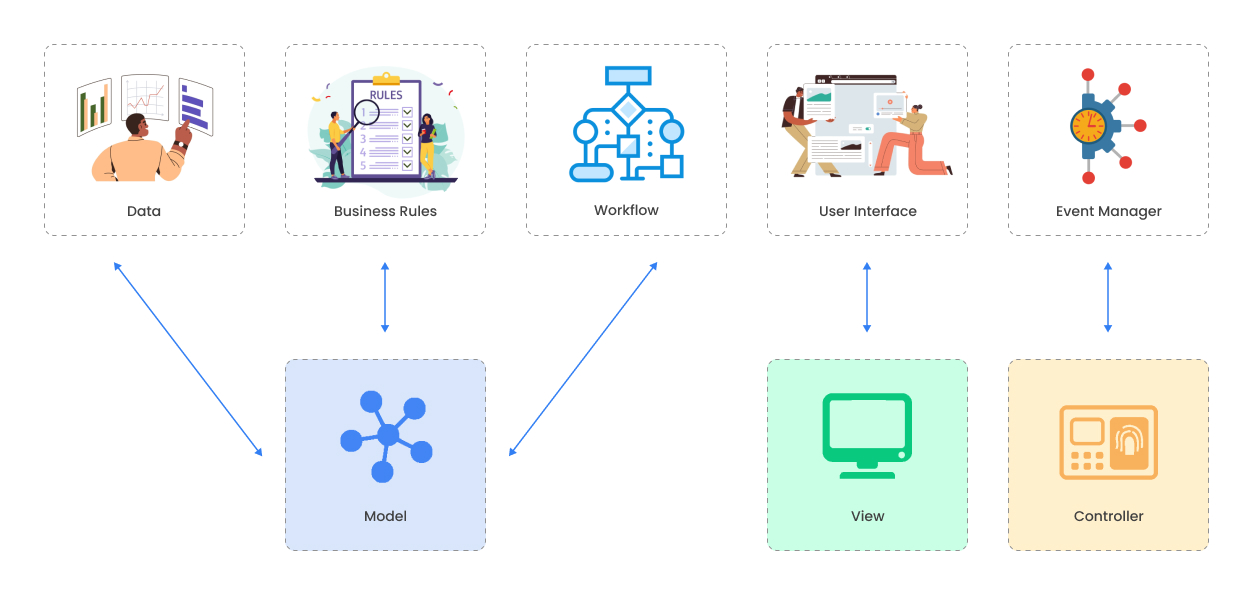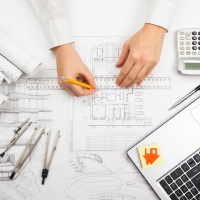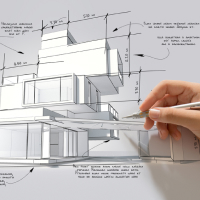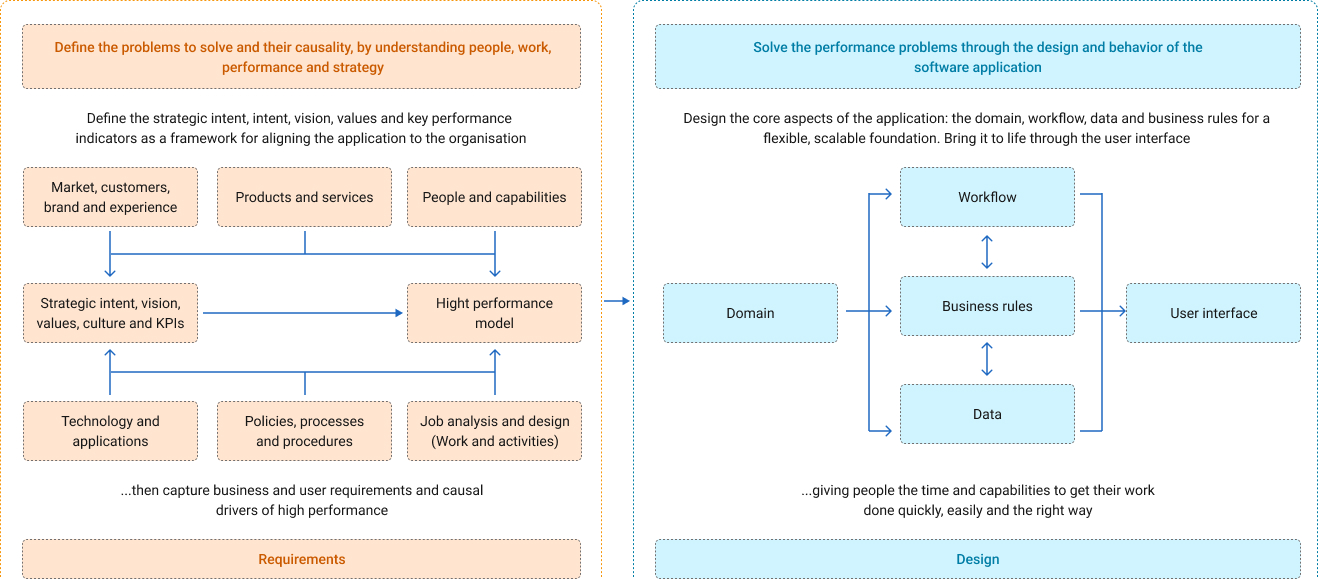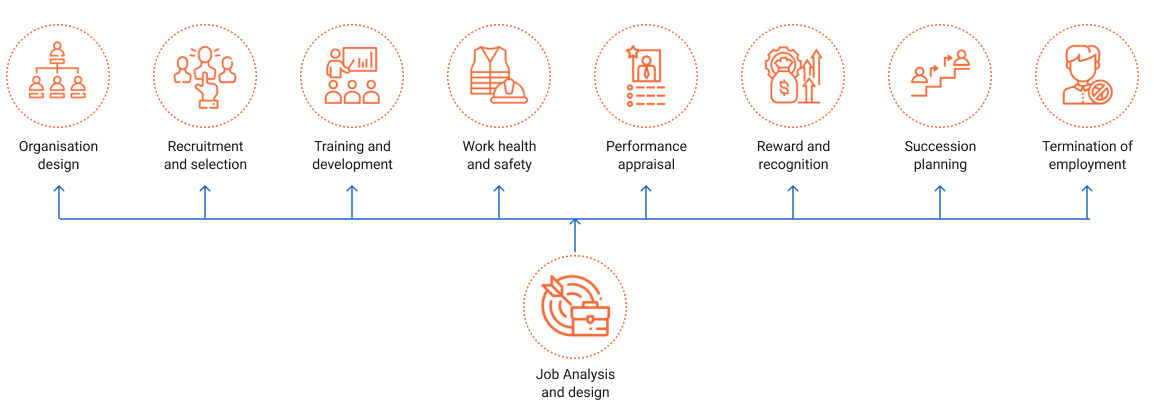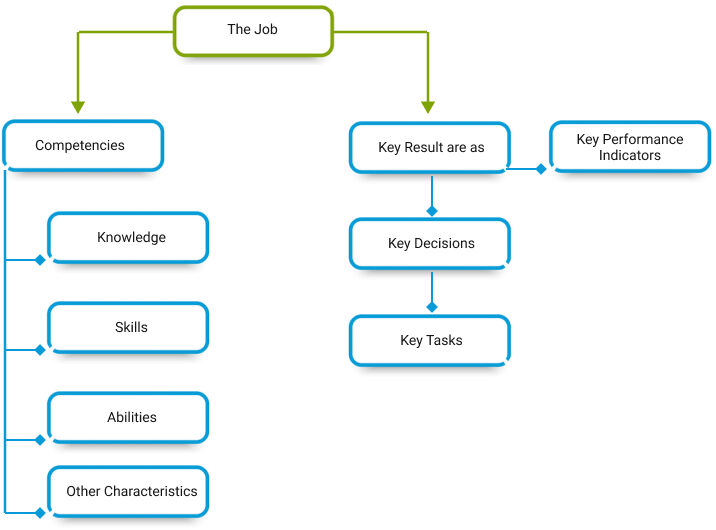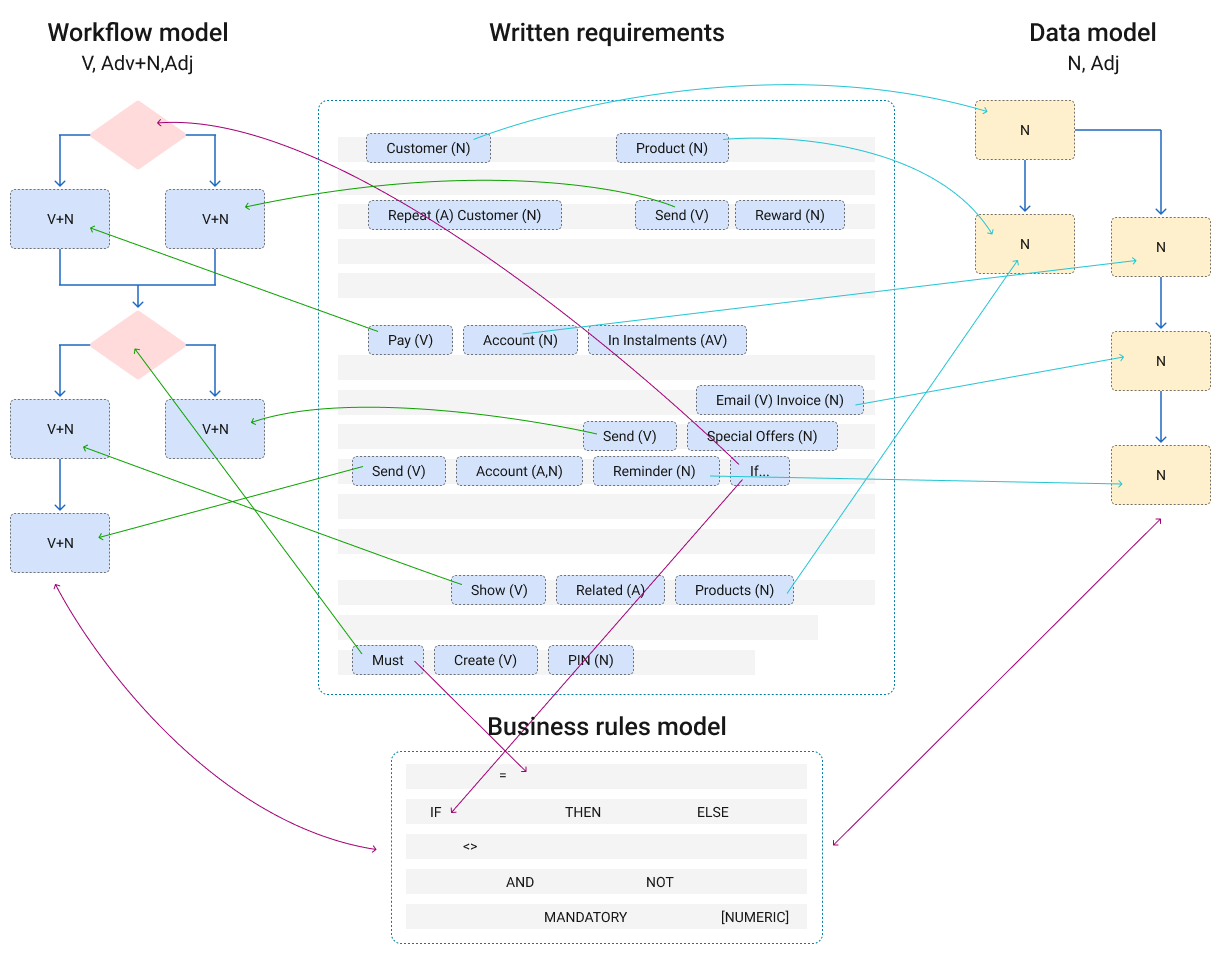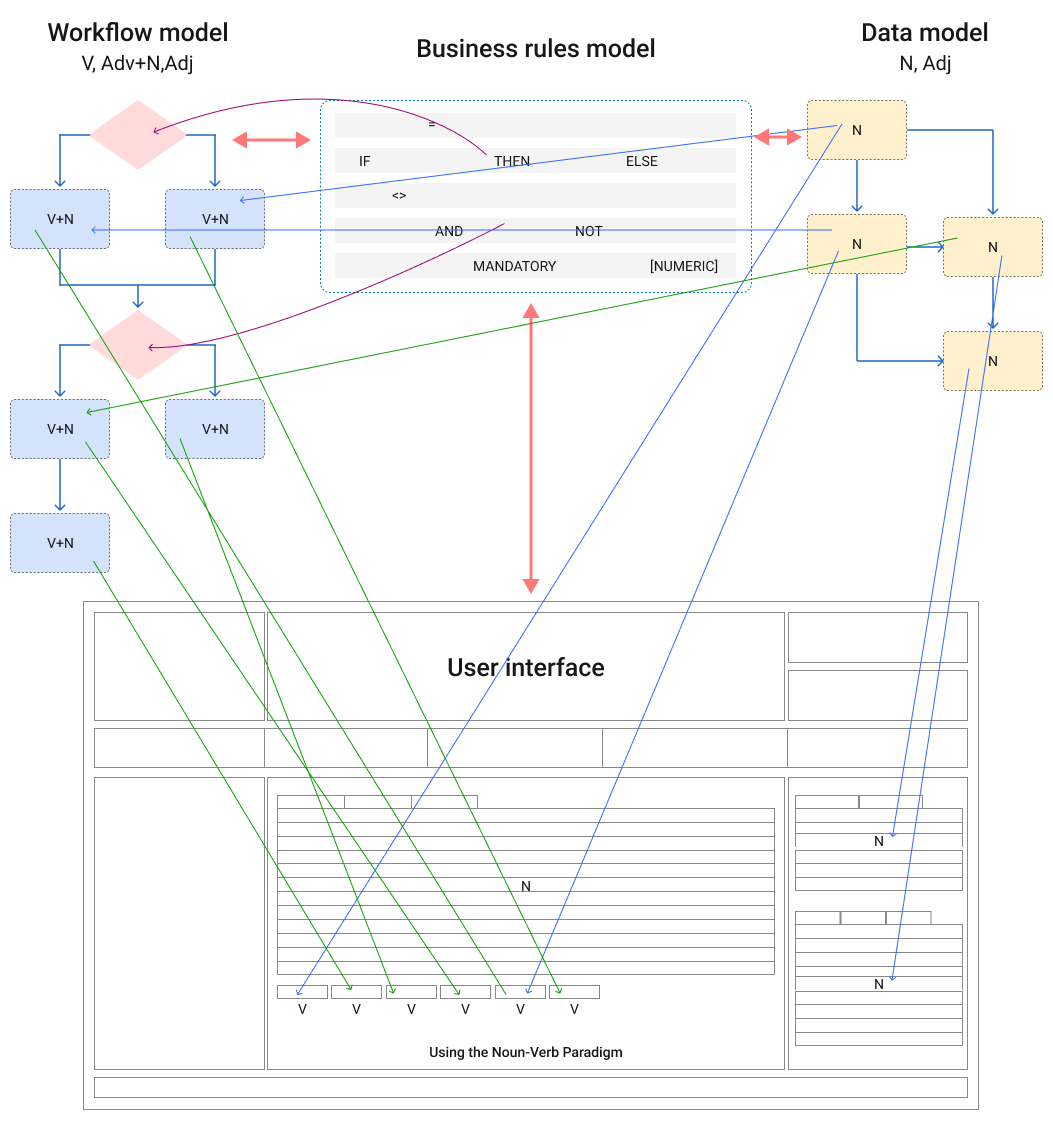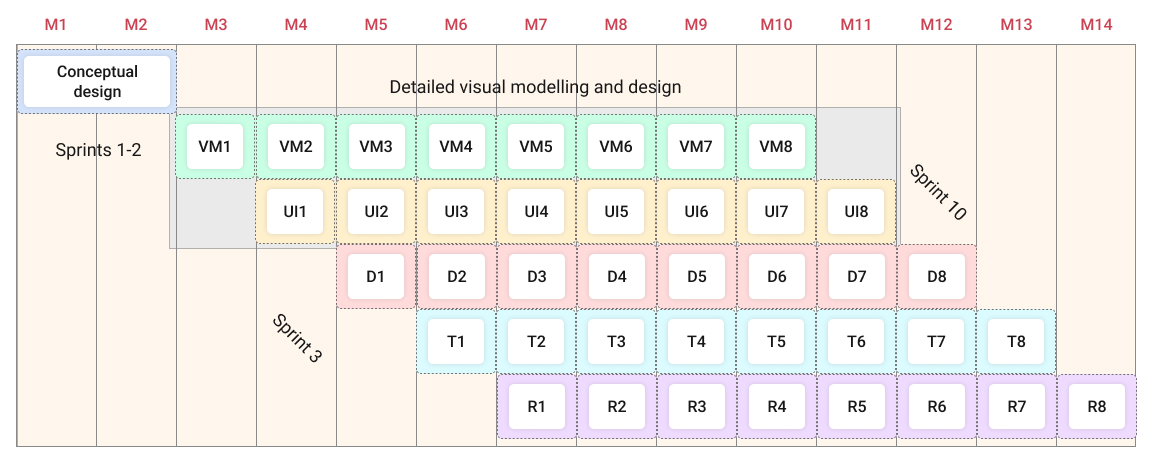Software Design : The design of complex software systems
Too many software systems fail to deliver, despite the best efforts of everyone involved. This is because:
- Requirements keep changing and the application lacks essential features, or has too many redundant functions.
- The functions within the application can be clunky, reducing efficiency.
- The application goes through multiple time-consuming and costly iterations before it can deliver on the required functionality.
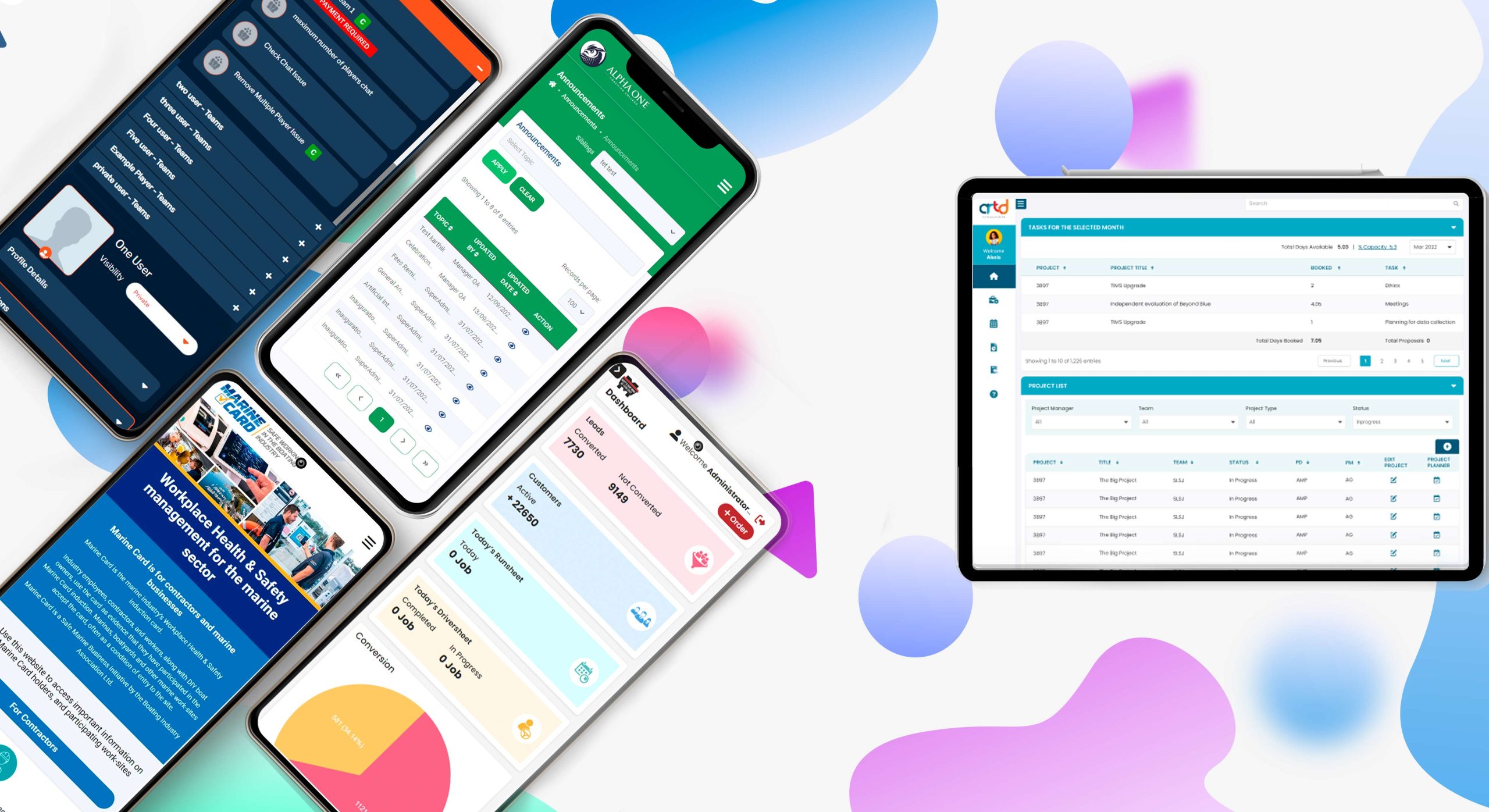
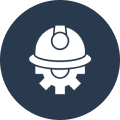
Civil
standard design template
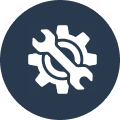
Mechanical
standard design template
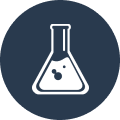
Chemical
standard design template

Electrical
standard design template

Software
no standard design template
- Without a visual blueprint, developers are forced to use written requirements. Unfortunately, these can be ambiguous, incomplete, or extraneous - and therefore hard to validate and manage effectively.
- In the same way that buildings, chemicals, or electronic devices would never be referred to be descriptive language, software development needs standardised conventions that enable developers to communicate clearly.
Software Design gives you, your business, and your end users three key outcomes:
- You get to see your application before we build it to make sure it's what you asked for.
- You get to test it to make sure it delivers on the business case.
- You get to change your mind on the design and behaviour of the app early, preventing a large series of reiterations later on in the development process.
What software design looks like at Intergy
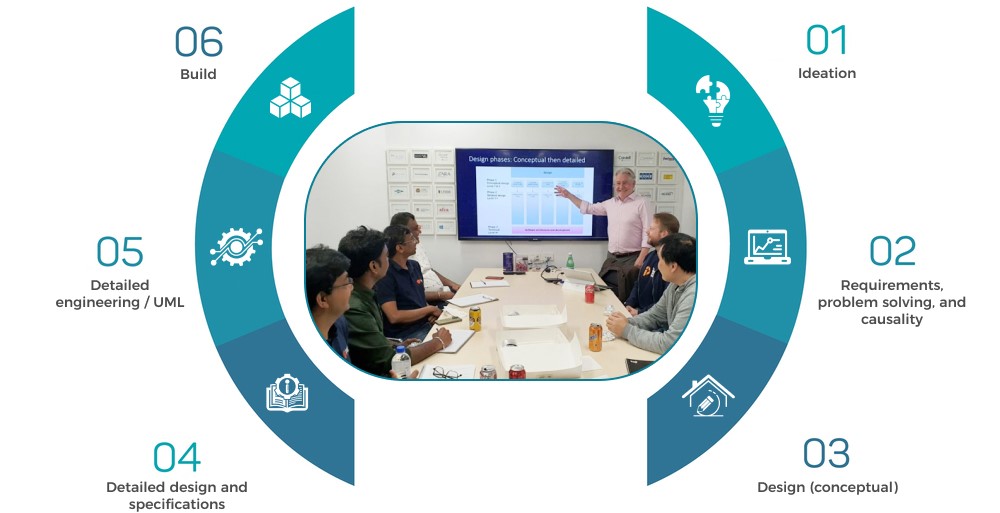
A Typical Design Workshop at Intergy
There are two main steps in Software Design
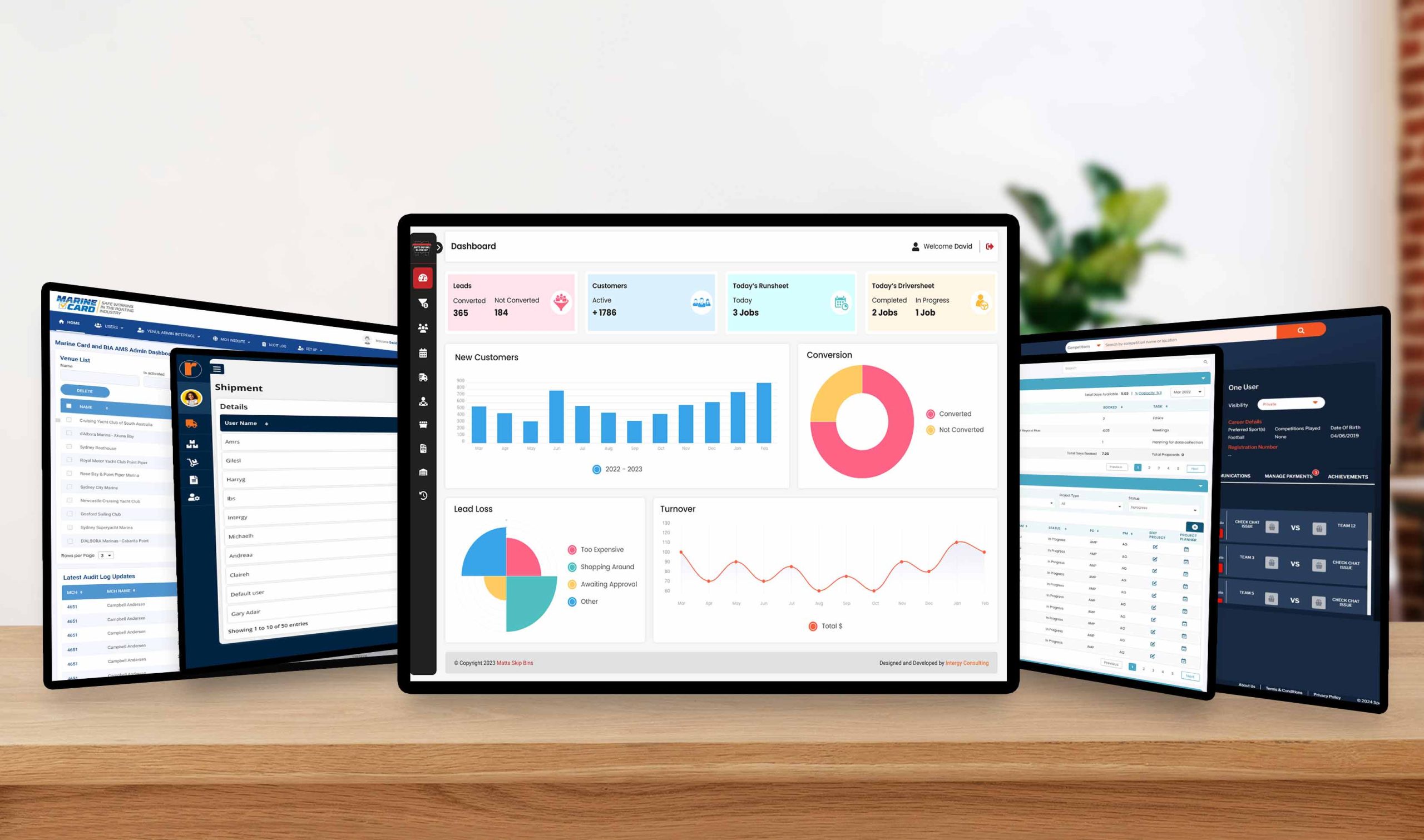
- Requirements - Understand the problems to solve and their causality
- Design – Convert the written or other requirements into the domain, workflow, data and business rules models and then create the user interface
Software design is fast-paced, and can be integrated into workshops, involving the business and end users in the design of the solution. This mitigates the risk of any adverse surprises. It can also be integrated into Agile, Waterfall, or any other development methodology, and works with any platform, technology, or framework. This enables detailed app customisation in the early stages, and can apply to any software project.
Software Design creates applications that enable brilliant work.
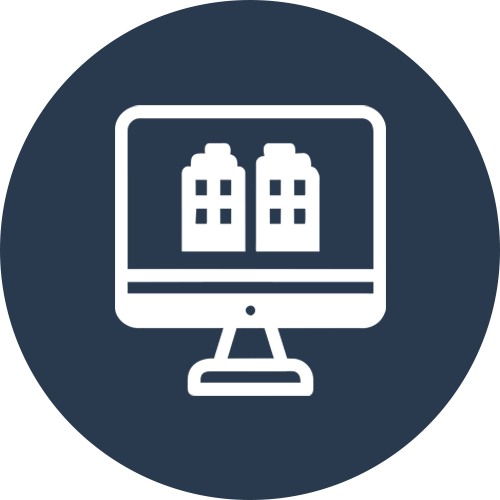
The Software Design Blueprint
The Blueprint comprehensively covers the information the software engineers need to either code directly, or, for complex software, create the lower-level UML, BPMN, or ORM diagrams, without having to interpret written requirements. The Blueprint’s visual models are easy for the client to approve.
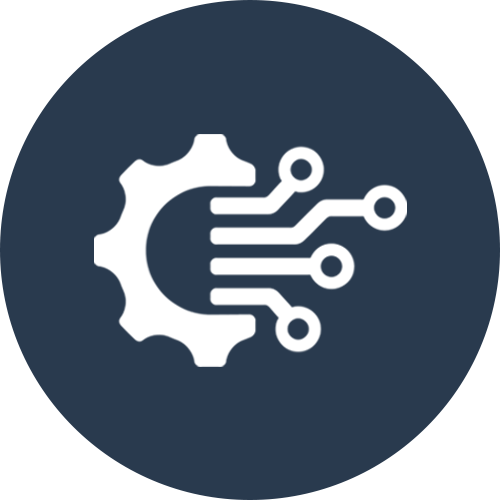
The Software Design Process
Requirements in Software Design works a little differently to traditional requirements because we now have a formal visual design phase between defining requirements and the build itself. Typically, the requirements phase is inappropriately treated as the design itself, even though the output is mostly written.

Step 1: Requirements (problems and causality)
When the conceptual design is completed, usually taking 1 or 2 sprints, we can create a high fidelity prototype and ask staff to test it. The prototype can be built to test the application on high-volume or business-critical work cases, and measurements can be taken to determine its viability at this stage.

Step 2: Design (Visual modelling and UI / UX design)
Visual modelling involves converting the written requirements into the core visual models: domain, data, workflow and business rules. User interface design involves curating the user experience based on the core visual models.
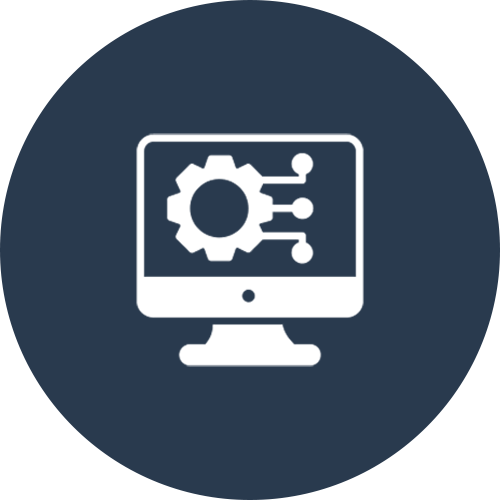
How to use the software design process and blueprint
This blueprint and standard process can be integrated into Agile, Waterfall, or any other development methodology, and works with any platform, technology, or framework.
Objections and Solutions to Standardising the Software Design Process
Our digital design process has been designed to be efficient in two key areas:
• It is designed to be used in real-time workshops, involving SMEs and end users in the initial stages
• The Blueprint has multiple levels of detail, which can be expanded upon after defining the key functionality requirements.
Our UI & UX consulting services can involve an audit and modification of an existing system, or completely new development – or any mix of these services that you would like. Hence, we can’t put an exact price on it without going through our initial free consultation stage.
How we use design thinking to create UI/UX solutions

Presenting Data

Presenting Work and Activities

Presenting User Interface Controls
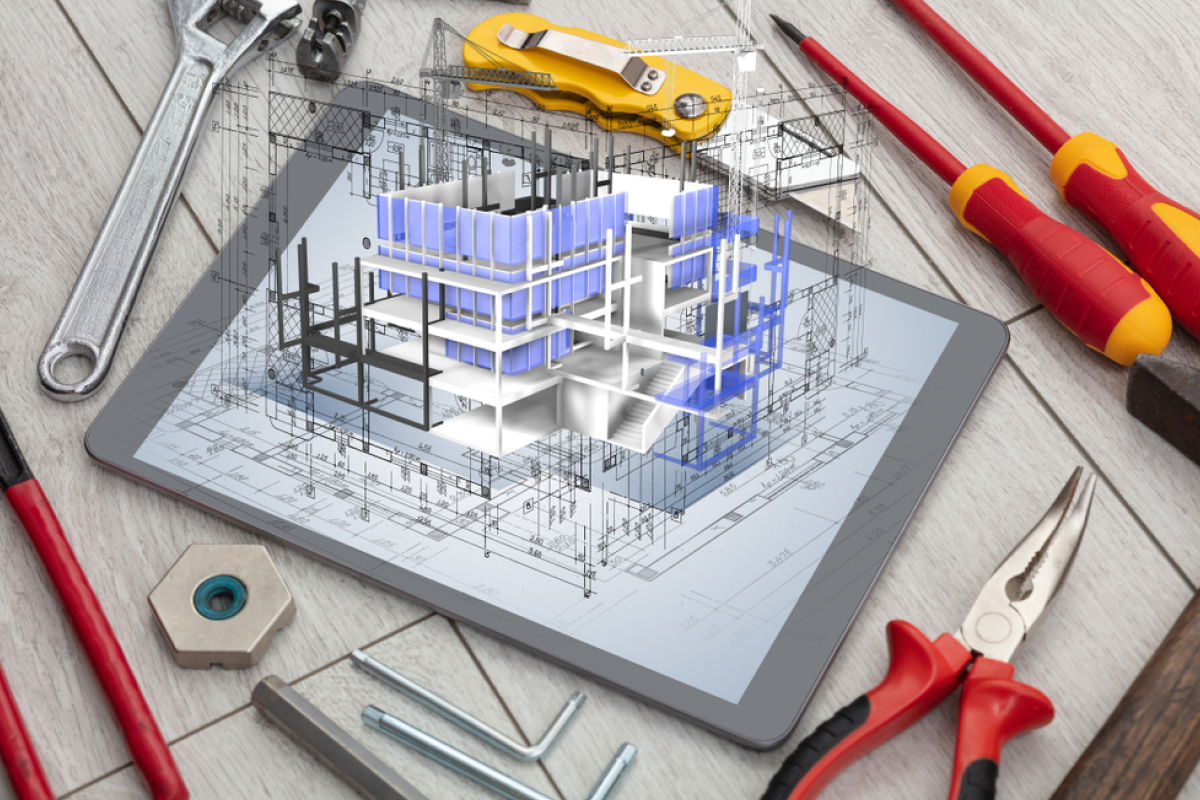
Organising Within Architecture
Our Design Services

UI and UX Design
We provide outstanding mobile, desktop, and responsive user interfaces.

SOLUTION TECHNICAL DESIGN
We help you define the best architecture and features for your app.

Software Development
Our team of design consultants, project managers, and experts come together to build your bespoke application.
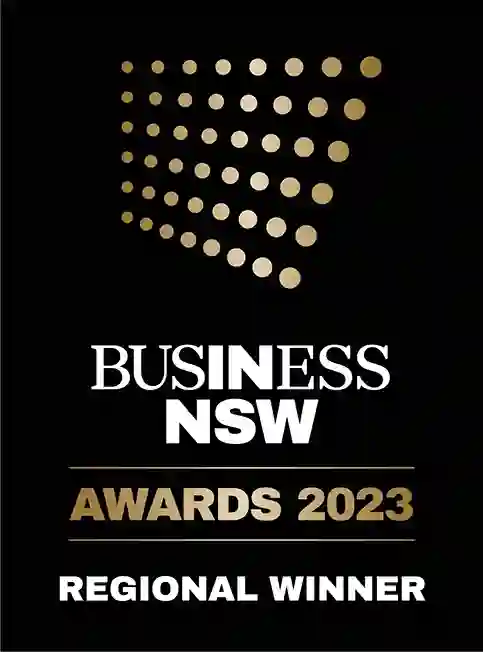




We’re trusted by over 500 organisations, both private and public - to deliver incredible UI/UX experiences
Case Studies
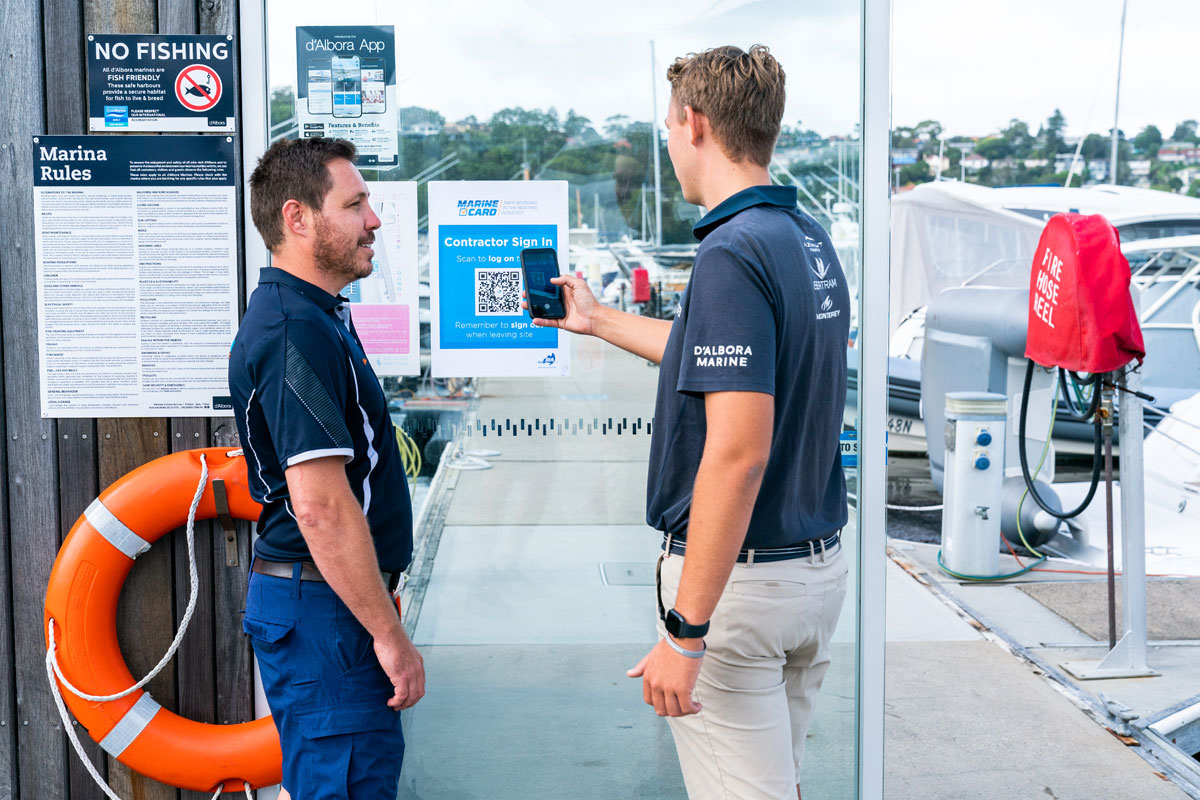
BIA
How Intergy helped bring contractors and contracts together in the maritime industry through UX design.

STATE MEDICAL ASSISTANCE
How we helped SMA create a comprehensive Business Management System.

BMP+ BIOFOULING
Developing a Custom Software Application for the Maritime Industry with a modern UI.
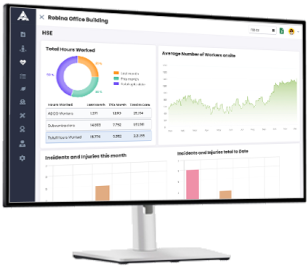
UI/UX design by Intergy for ClinicSpace/Healthspace

UI/UX design by Intergy for State Medical Assistance
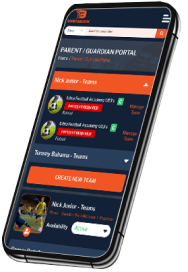
UI/UX design by Intergy for SportsBlock
Smart Technology and Beautiful Design are the foundations, of successful lasting digital transformation in the workplace.
Connect with Us
Sydney (Headquarters)
1/153 Walker Street, North Sydney 2060.
